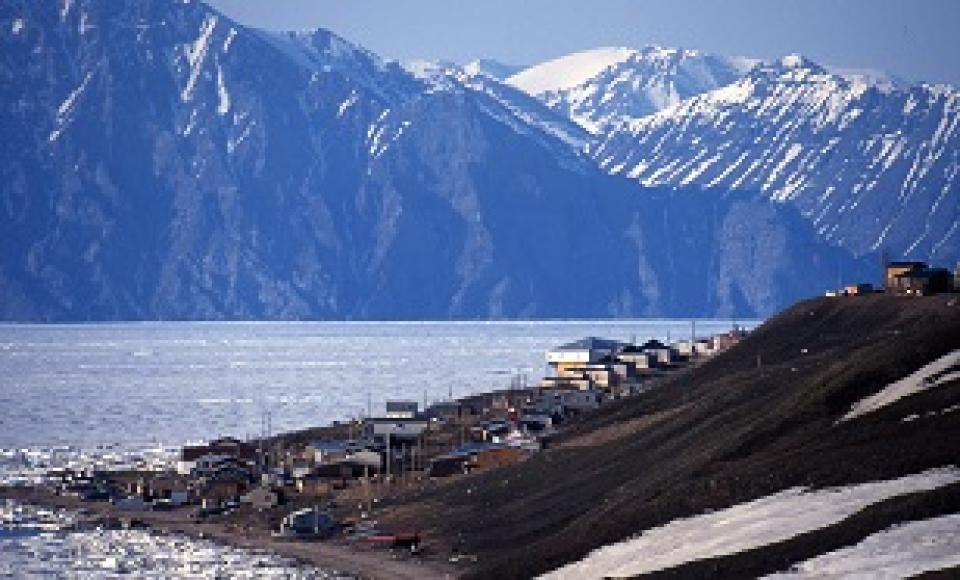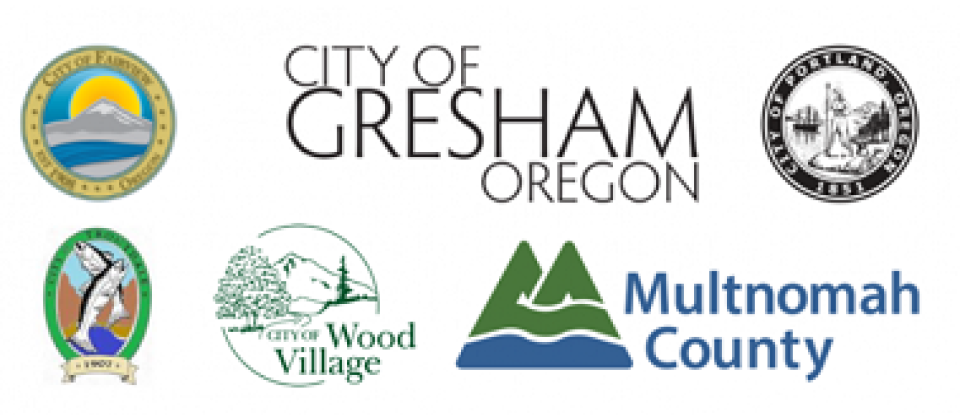
Fast, affordable Internet access for all.

This afternoon we hosted a YouTube Live event to talk about a model for financing Fiber-to-the-Home (FTTH) networks with the potential to dramatically expand ultrafast Internet access at affordable rates with no large upfront costs to homeowners. Christopher was joined by Deborah Simpier, CEO of Althea Networks, to talk with NetEquity Networks Founder and CEO Isfandiyar Shaheen (Asfi) about how it works, and dig into practical questions about its potential to fiberize rural America. This “fiber condominium” approach pairs collectively owned network infrastructure with the equity boost that comes with bringing symmetrical gigabit access to residential housing.
Watch the recording below, and read more about the approach.
After years of struggling to obtain reliable Internet connectivity, The Hoh Tribe in western Washington has entered a beta trial with SpaceX’s StarLink satellite Internet service, drastically improving the community's Internet access speed and capacity.
Russ Elliot, Director of the newly formed State Broadband Office, had been working closely with Melvinjohn Ashue, the former Vice-Chairmen of the Hoh Tribe. Russ has a background running an Internet Service Provider (ISP) and is skilled at networking with technology companies to tap into resources and opportunities to help connect reservations, rural communities, and others.
Notably, Washington state emergency responders had also begun using StarLink in areas decimated by wildfires and since, StarLink has had a positive working relationship with people within the Washington state government. When Starlink’s beta began, Russ caught wind and introduced Starlink’s people to the Hoh tribe, and they shared their ongoing difficulties. Starlink was eager to help and excited that the Hoh tribe reservation was well positioned in relation to the satellites Starlink had in orbit at the time.

A Plug and Play Broadband Solution
The setup was relatively fast, taking about a month in all, and logistically not complicated. Starlink held virtual meetings with the Hoh tribe council explaining the technology, setup, and service. The company also sent representatives to the Hoh reservation to test out the product on site, and after the tribe council discussed the service with community members 18 of 23 homes signed up and the satellite receiver kits were sent out shortly after.
Join us for a special livestream next week on Thursday, November 19th, from 3-4pm (CST). We’ll be talking about a model for financing Fiber-to-the-Home (FTTH) networks with the potential to dramatically expand ultrafast Internet access at affordable rates with no large upfront costs to homeowners. This “fiber condominium” approach pairs collectively owned network infrastructure with the equity boost that comes with bringing symmetrical gigabit access to residential housing.
In this Community Broadband Networks special livestream from ILSR, Christopher will be joined by Deborah Simpier, CEO of Althea Networks, to talk with NetEquity Networks Founder and CEO Isfandiyar Shaheen about how it works, and dig into practical questions about its potential to fiberize rural America.
Less than a third of the nation currently enjoys fiber connectivity, with the remainder stuck with cable or DSL. At least 14 million Americans lack wireline connectivity whatsoever.
We look forward to having you join us for the conversation, and welcome your questions during the stream!
What: Discussing A New Financing Model for Fiber Expansion on YouTube Live
When: Thursday, November 19th, 3pm CST
Where: YouTube Live: https://www.youtube.com/watch?v=J37pWLLHEnM
Who: Christopher Mitchell (ILSR), Deborah Simpier (Althea Networks), and Isfandiyar Shaheen (NetEquity Networks)
Don't miss interviews and other video content from ILSR; subscribe on YouTube!

This week on the podcast Christopher talks with Catherine Nicolaou, External Affairs and Marketing Manager for Sacred Wind Communications, a rural local exchange carrier in NW New Mexico that has been focused on serving the Navajo Nation communities there. She shares the history of Sacred Wind, from buying copper infrastructure from Century Link 13 years ago in a region where just 26% of the households had Internet access to its 400 miles of fiber infrastructure today, allowing it to bring broadband to more than 92% of those living there.
Catherine tells Christopher how the company has had to rely on the full array of technologies to bring broadband access to families in a large area with particular geographic and topographic challenges, from Citizens Broadband Radio Service (CBRS) to TV White Space (TVWS) to infrared to fixed wireless and, of course, Fiber-to-the-Home (FTTH). They talk about what it means to Sacred Wind’s subscribers that the provider has never raised prices, and the work it’s been doing during the pandemic to make sure everyone gets and stays connected.
Don’t forget to check out our new show, Connect This!, where Chris brings together a collection broadband veterans and industry experts live on Youtube to talk about recent events and dig into the policy news of the day.
This show is 30 minutes long and can be played on this page or via Apple Podcasts or the tool of your choice using this feed.
Transcript below.
We want your feedback and suggestions for the show-please e-mail us or leave a comment below.
Listen to other episodes here or view all episodes in our index. See other podcasts from the Institute for Local Self-Reliance here.
Thanks to Arne Huseby for the music. The song is Warm Duck Shuffle and is licensed under a Creative Commons Attribution (3.0) license.
As Mayors must concern themselves with everything from public safety and health to the development of the local economy and the provision of essential municipal services, they tend to have a particular focus on the infrastructure necessary to support it all, amid a cacophony of competing interests.
Over the summer, having reached consensus on the fundamental importance of “the digital infrastructure of tomorrow,” a particular focus of the United States Conference of Mayors 88th National Annual Meeting was to issue a resolution declaring the necessity of “Preserving Local Public Rights-of-Way and Regulatory Authority to Most Effectively Deploy 5G Broadband Access and Bridge the Digital Divide during the COVID-19 Pandemic.”

The Mayors’ resolution comes in response to the Federal Communications Commission’s (FCC's) 2018 preemption of local governments’ authority to regulate 5G infrastructure in their cities.
At the heart of the regulatory debate: local governments’ ability to determine the amount of fees to charge mobile carriers that want to place 5G equipment in Rights-of-Way. In addition to putting limits on those fees, the FCC Order also sets strict timelines by which cities and towns must respond to carrier applications. The FCC decision, issued over the objections of industry observers and policy experts, essentially eliminates local communities’ ability to negotiate in order to protect their own Rights-of-Way and the poles, traffic lights, and other potential structures within those Rights-of-Way.
Preempting Local Authority
This week Christopher brings together Doug Dawson (Owner and President, CCG Consulting), Monica Webb (Head of Marketing Development and Strategic Partnerships, Ting) and returning guest Travis Carter (CEO, US Internet).
The group first discusses Low-Earth Orbit satellite Internet access in the context of SpaceX’s Starlink public beta launch, and what it means for connecting unserved Americans in both urban and rural areas. Then, they dig into the future of cable as a wireline broadband technology, with frank talk about its longevity in the face of fiber as the industry begins talking about the penetration of DOCSIS 3.1 and future moves to DOCSIS 4.0. Finally, Christopher, Doug, Monica, and Travis spend time tackling the question of why we don’t see more small, private Internet Service Providers (ISPs) doing fiber projects in urban areas. They debate, for instance, Right-of-Way issues and the problem of access to capital.
Subscribe to the show using this feed.
Email us broadband@muninetworks.org with feedback and ideas for the show.

This week on the podcast Christopher talks with the city of Sandwich, New Hampshire’s Broadband Advisory Committee Chair Julie Dolan and member Richard Knox. The join us to discuss the New Hampshire Electric Cooperative’s recent vote to add broadband to its charter.
Sandwich is particularly poorly served in NH and they have been seeking solutions for a long time. In organizing around the electric cooperative (which covers 115 towns and includes 85,000 members), in less than a year local stakeholders have organizing two votes around the importance of quality Internet access which, at the beginning of October, pushed the co-op into the business. Julie and Richard share with Chris how it all unfolded and what it means moving forward.
Don’t forget to check out our new show, Connect This!, where Chris brings together a collection broadband veterans and industry experts live on Youtube to talk about recent events and dig into the policy news of the day.
This show is 38 minutes long and can be played on this page or via Apple Podcasts or the tool of your choice using this feed.
Transcript below.
We want your feedback and suggestions for the show-please e-mail us or leave a comment below.
Listen to other episodes here or view all episodes in our index. See other podcasts from the Institute for Local Self-Reliance here.
Thanks to Arne Huseby for the music. The song is Warm Duck Shuffle and is licensed under a Creative Commons Attribution (3.0) license.
News stories highlighting the breadth and depth of the digital divide and its impacts in the midst of the Covid-19 pandemic have dominated the headlines in recent months, but a new report emphasizes the degree to which dozens of communities in one Canadian province have struggled with connectivity issues for years. The recently released Nunavut Infrastructure Gap Report [pdf] shows what broadband access looks like for the 35,000 or so mostly Inuit residents of the nation’s youngest province, and what solutions exist for closing the gap for tens of thousands who struggle to get online.
Nunavut is the northernmost of Canada’s provinces, made up of two interlocking geographies: the landmass immediately north of Manitoba and east of the Northwest Territories, and the large collection of islands curled around Baffin Bay to the west of Greenland. It has a population barely 1/20th the size of Wyoming (the U.S.’s smallest by population) despite being the second-largest political subdivision by area in North America, and a population density of just 0.05 persons/square mile.

A Host of Infrastructure Gaps
Along the banks of the Columbia River, Multnomah County (pop. 813,000), Oregon is considering a publicly owned Fiber-to-the-Home (FTTH) network after being handed a study more than a year in the making. The report estimates that a countywide network reaching every home, business, and farm in a five-city area would cost just shy of $970 million, and bring with it a wealth of savings and other benefits to the community it serves.
Origins
The study has its origins in a 2017 push initiated by an advocacy group called Municipal Broadband PDX which has sought more affordable and equitable Internet access in the region. In 2018, the County Board of Commissioners agreed that it should be explored and approved the funding of a study, with the city of Portland and Multnomah County each contributing $100,000 and the remaining towns of Fairview, Gresham, Troutdale, and Wood Village joining the effort to collectively contribute an additional $50,000 for funding. Over the next year, CTC Technology and Energy conducted a comprehensive survey, analysis, and evaluation, and the results were delivered at the end of September.

US Ignite has announced a new initiative called Project Overcome which will fund five projects looking for novel solutions to broadband connectivity problems in communities around the United States.
Th endeavor, funded by a $2 million National Science Foundation grant, will “support the selection and buildout of five proof-of-concept network deployments designed to connect both rural and urban communities in novel ways.” More than three-quarters of the funding will go directly to project awards, with the aim to:
[C]ollect data to measure the technical and social impacts of different connectivity strategies [in order to] discover patterns of success that can be repeated on a larger scale across the country, and to catalog the distinctions that emerge based on variations in the communities served.
The Application Process
An RFP will come out in the next few weeks, with winners chosen by early spring. From the website, competitive applications will:
Be chosen based on the use of innovative technologies, such as mesh networks and new spectrum access solutions, as well as creative deployment models that leverage both public and private sector partners. Participating teams should draw from some combination of academic, nonprofit, industry, government, student, and volunteer partners. The five proposals ultimately selected will reflect a mix of population density characteristics, demographics, geographic regions, housing types, local and industry collaborations, and technical approaches.